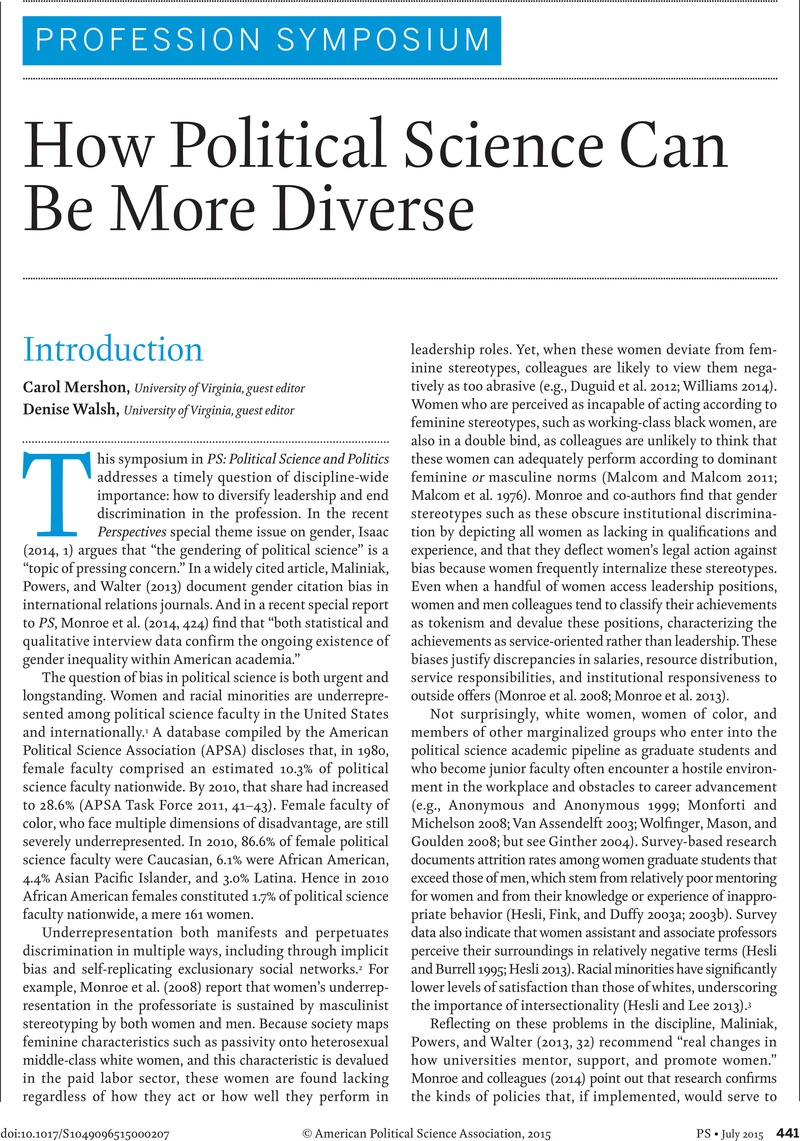Crossref Citations
This article has been cited by the following publications. This list is generated based on data provided by Crossref.
mattocks, kate
and
briscoe-palmer, shardia
2016.
diversity, inclusion, and doctoral study: challenges facing minority phd students in the United Kingdom.
European Political Science,
Vol. 15,
Issue. 4,
p.
476.
Smooth, Wendy G.
2016.
Intersectionality and women’s advancement in the discipline and across the academy.
Politics, Groups, and Identities,
Vol. 4,
Issue. 3,
p.
513.
Mershon, Carol
and
Walsh, Denise
2016.
Diversity in political science: why it matters and how to get it.
Politics, Groups, and Identities,
Vol. 4,
Issue. 3,
p.
462.
Sterett, Susan M.
2017.
Law's Presence, Law's Absence: Reporting Sexual Harassment and Other Exclusions in the Academy.
SSRN Electronic Journal,
Behl, Natasha
2017.
Diasporic researcher: an autoethnographic analysis of gender and race in political science.
Politics, Groups, and Identities,
Vol. 5,
Issue. 4,
p.
580.



